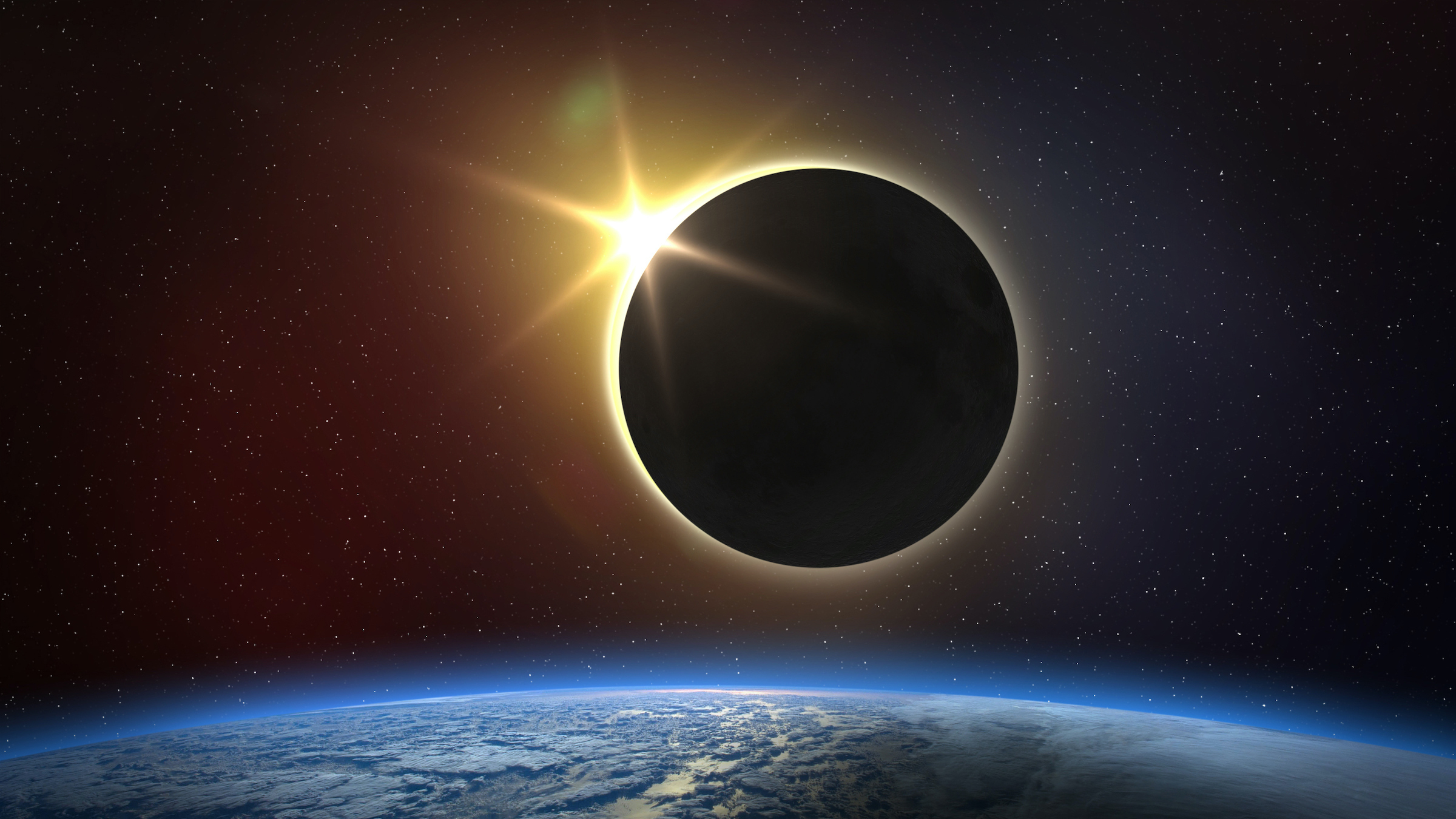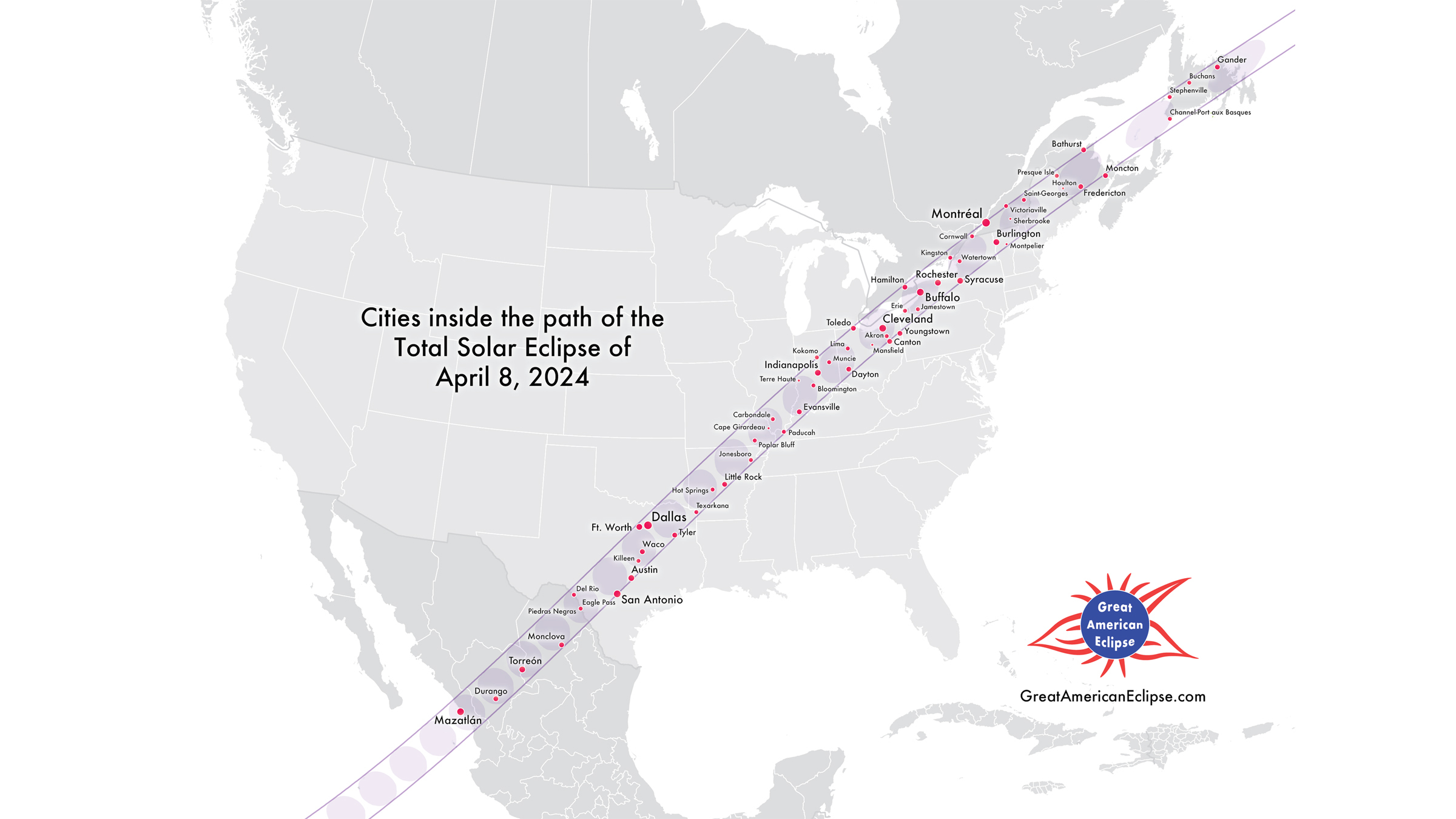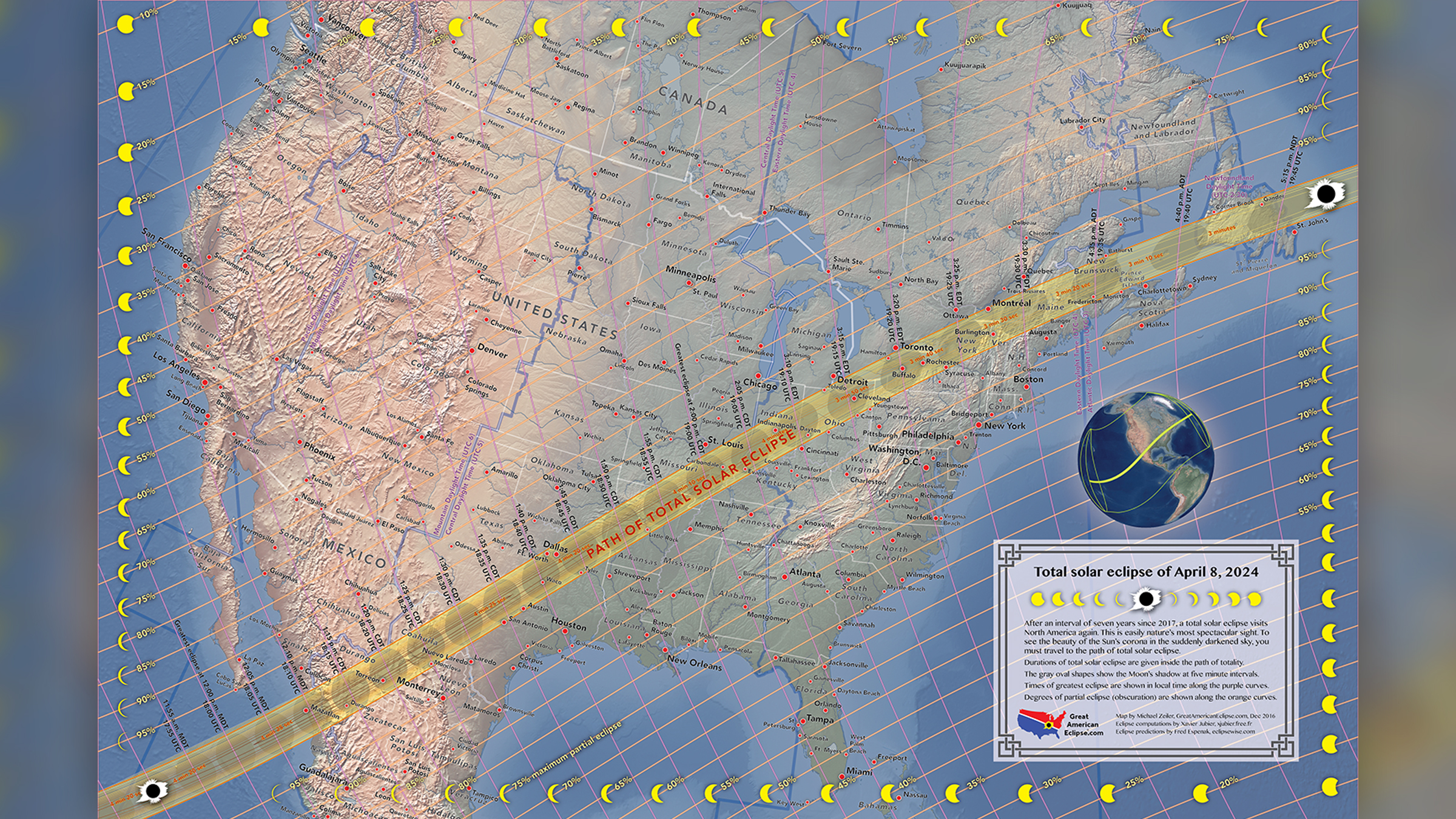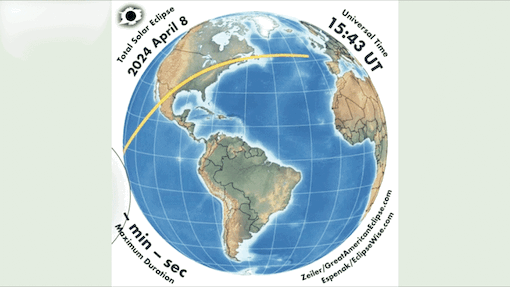Get ready, the next great North American total solar eclipse is 2 years from today
Totality will last nearly 5 minutes in some places.

Exactly two years from today, a total solar eclipse will sweep across North America, plunging tens of millions of people into the stunning darkness known as totality, when the moon passes in front of the sun, completely blocking its rays.
This eclipse, which will take place on Monday, April 8, 2024, will pass over Mexico, across the U.S. and through Canada, and will mesmerize even more people than the 2017 Great American Total Solar Eclipse. That blockbuster event had a nearly 70-mile-wide (113 kilometers) path of totality that passed from Oregon to South Carolina, where 12.25 million people lived. In contrast, the 2024 total solar eclipse's 115-mile-wide (185 km) path of totality in the U.S. will pass from Texas through Maine and wow a region where 31.5 million people live, according to Kelly Korreck, head of science operations and project manager for the Solar Wind Electrons Alphas and Protons at NASA.
Even the length of totality will be longer. "The maximum duration of totality will be 4 minutes and 26 seconds in southwest Texas, so that's almost double what we saw in 2017," Korreck told Live Science. "That's a lot more time in that darkness with the sun blotted out by the moon."
During a total solar eclipse, the sun, moon and Earth line up on an imaginary 180-degree line. When this occurs, the moon blocks the sun's light, plunging parts of Earth into a few minutes of darkness. During this darkness, or totality, temperatures can drop more than 15 degrees Fahrenheit (8.3 degrees Celsius). Despite it being daytime, many animals act like it's nighttime, with birds roosting and crickets chirping, Korreck added.
Related: Dazzling photos of the solar eclipse from Antarctica
On April 8, 2024, the total solar eclipse will make landfall at Isla Socorro, about 370 miles (600 km) off the coast of Mexico. Then it will pass through the Mexican cities of Mazatlán, Torreón and Durango before crossing into Texas at 1:27 p.m. CDT (2:27 p.m. EDT).


Once in the U.S., the total solar eclipse will pass through 15 states: Texas, Oklahoma, Arkansas, Missouri, Kentucky, Tennessee, Illinois, Indiana, Ohio, Michigan, Pennsylvania, New York, Vermont, New Hampshire, and Maine, exiting at 3:35 p.m. EDT (2:35 p.m. CDT). Finally, the path of totality will extend over parts of Canada, including New Brunswick, Nova Scotia and Newfoundland.
Sign up for the Live Science daily newsletter now
Get the world’s most fascinating discoveries delivered straight to your inbox.
Even for those not along the path of totality, a celestial show awaits: "The entire U.S. will see a partial eclipse," in which the moon partly covers the sun, Korreck said.

During totality, people can look at the sky without protective eye gear, but that's not the case for partial eclipse viewers. Before and after totality occurs and for people watching a partial eclipse from outside the path, it's critical to wear protective eyewear — such as solar eclipse glasses (these are different from sunglasses). Other gadgets, such as solar eclipse viewers, can help people see the eclipse safely projected on a background. (Never look directly at a solar eclipse unless you are in complete totality, according to the American Academy of Ophthalmology. Looking directly at the sun can damage your eyes.)
These tools will also come in handy for the Oct. 14, 2023 annular solar eclipse, which will pass over North America (from Oregon to Texas), Central America and South America. However, there will be no totality during this eclipse; rather, the moon will pass in front of the sun but not completely block its rays, leaving a "ring of fire" around the moon's edges.
"It's not as dramatic [as totality] but it's still very beautiful — it's the ring of fire," Korreck said. This happens when the sun, moon and Earth line up, but "the moon is farthest from the Earth at that point when it passes between the Earth and the sun. That's why you don't get total coverage."
For people who want to experience totality but don't live in the projected path for the 2024 total solar eclipse, now is the time to reserve lodgings. After all, the next total solar eclipse to cross over the United States won't happen again until Aug. 12, 2045.
"So in some ways, get your eclipse now," Korreck said.
Originally published on Live Science.

Laura is the archaeology and Life's Little Mysteries editor at Live Science. She also reports on general science, including paleontology. Her work has appeared in The New York Times, Scholastic, Popular Science and Spectrum, a site on autism research. She has won multiple awards from the Society of Professional Journalists and the Washington Newspaper Publishers Association for her reporting at a weekly newspaper near Seattle. Laura holds a bachelor's degree in English literature and psychology from Washington University in St. Louis and a master's degree in science writing from NYU.









